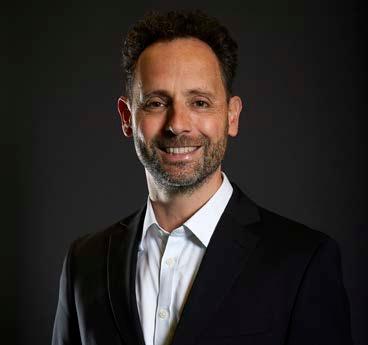
3 minute read
EARS WIDE OPEN: SCHUMANN
2 MARCH 2020
Melbourne Symphony Orchestra
Nicholas Bochner conductor / presenter
Haydn Symphony No.104 London (excerpt)
Schumann Symphony No.2 (excerpts)
This event will be livestreamed to the MSO’s YouTube channel.
NICHOLAS BOCHNER CONDUCTOR / PRESENTER
After training in Adelaide and London, Nicholas spent 3 years as Artist-in-Residence at the University of Queensland as part of the ensemble Perihelion, forging a strong reputation as an exponent of contemporary music. He joined the MSO as Assistant Principal Cello in 1998. Since then he has appeared as a soloist, chamber musician and recitalist. He has also taught cello and improvisation at the Australian National Academy of Music (ANAM). Nicholas has always had a strong commitment to music education and community engagement. In 2010 he was awarded the Dame Roma Mitchell Churchill Fellowship to study the LSO’s iconic Discovery program and the use of improvisation in training classical musicians at the Guildhall School of Music. In 2016, Nicholas’ considerable experience as an orchestral musician and his passion for communication led him to undertake a fellowship at ANAM where he developed, conducted and presented educational concerts for primary school children. During the fellowship he was mentored by Paul Rissmann, Graham Abbott and the legendary Richard Gill AO. Since then he has presented educational concerts for children and adults for MSO, ANAM and the Melbourne Chamber Orchestra. In 2020 he was named the MSO’s Cybec Assistant Conductor for Learning and Engagement. He is also the conductor of the Melbourne University Biomedical Students’ Orchestra. In support of his work as an education presenter, Nicholas has been studying conducting with Benjamin Northey and won a coveted place at the TSO’s 2019 Australian Conducting Academy.
ROBERT SCHUMANN (1810–1856)
Symphony No.2 in C major, Op.61
Schumann is something of an enigmatic composer. Despite having produced a handful of works that are staples of the repertoire such as his Piano Concerto, the Piano Quintet and a number of other piano works, the value and beauty of much of his other music has been the subject of debate since his untimely death in 1856 at the age of 46.
In contrast with his close contemporaries Mendelssohn, Liszt and Chopin, he was not an obvious prodigy and didn’t enjoy early success as a pianist or composer. He retained this air of something of an outsider throughout his career. Having dabbled with legal studies, writing and literature, and a solo piano career, he eventually settled on composing. His view of his art, however, was rather broad and encompassing, making it his mission to address the artistic and social ills of the time through music.
Possibly because of his relatively late start in composition (his first published work was written at the age of 20), or perhaps because of his slightly obsessive personality, Schumann tended to focus on a particular type of composition for a period of time before moving to another. For ten years he wrote mostly solo piano music, before moving onto lieder (songs typically written for voice and piano), then chamber music, and finally orchestral works in 1841.
For much of 1844 and 1845 Schumann suffered with debilitating symptoms from the disease that would eventually kill him. As a result of this he spent much of that time studying the works of J.S. Bach and adopting an entirely new approach to composition.
Towards the end of 1845 he started having “symphonic thoughts”. Stemming from his view of needing to understand the works of the past to move towards the future, he adopted a quote from the opening of Haydn’s final symphony with an accompaniment in the style of J.S. Bach as the starting point for his Second Symphony.
The resulting large-scale, four movement work is as innovative as it is beautiful, with Schumann achieving a remarkable synthesis of personal expression and coherent form. As with all of his music we find layers of meaning in the sources of Bach and Haydn, the quotes of Beethoven, and his own work, all woven together with Schumann’s unique lyrical gift and rhythmic drive.
Nicholas Bochner © 2020
GLOSSARY
Cadence: a melodic or harmonic sequence that creates a sense of resolution [finality or pause].
Counterpoint: meaning ‘note against note’, implying two independent voices moving together.
Motif: a recurring idea in an artistic work, such as a short musical theme. Scherzo: a movement or passage of light or playful character.

